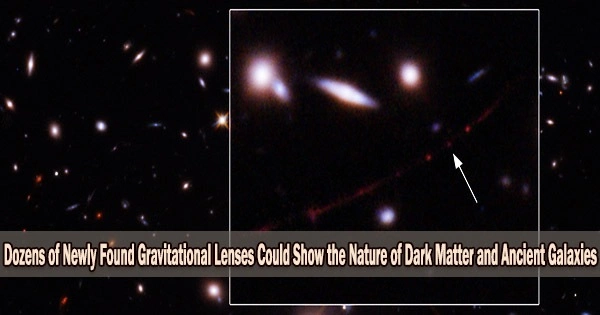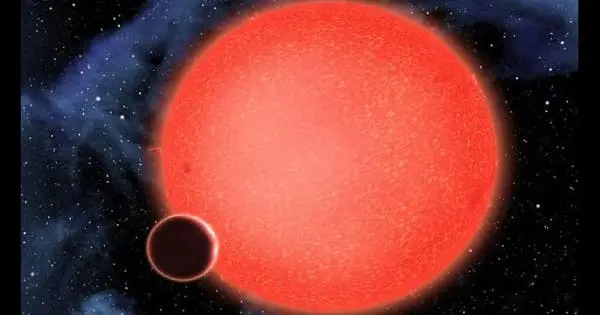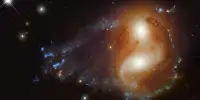Gravitational lensing is a phenomenon where the gravity of a massive object, such as a galaxy, bends and amplifies the light of a background object, such as a distant galaxy. This can create multiple images of the background object, as well as distorted or elongated shapes.
Up to 5,000 potential gravitational lenses were discovered earlier this year by a machine learning system, which could revolutionize our capacity to trace the development of galaxies since the Big Bang.
Now astronomer Kim-Vy Tran from ASTRO 3D and UNSW Sydney and colleagues have assessed 77 of the lenses using the Keck Observatory in Hawai’i and Very Large Telescope in Chile. She verified that 68 of the 77 are powerful gravitational lenses spanning huge cosmic distances with the help of her worldwide team.
With an 88% success rate, the algorithm appears to be trustworthy, and thousands of new gravitational lenses may exist. Only roughly a hundred gravitational lenses are currently in regular use, making them difficult to come by.
Kim-Vy Tran’s paper published today in the Astronomical Journal presents spectroscopic confirmation of strong gravitational lenses previously identified using Convolutional Neural Networks, developed by data scientist Dr. Colin Jacobs at ASTRO 3D and Swinburne University.
The work is part of the ASTRO 3D Galaxy Evolution with Lenses (AGEL) survey.
“Our spectroscopy allowed us to map a 3D picture of the gravitational lenses to show they are genuine and not merely chance superposition,” says corresponding author Dr. Tran from the ARC Centre of Excellence for All Sky Astrophysics in 3-Dimensions (ASTRO3D) and the University of NSW (UNSW).
“Our goal with AGEL is to spectroscopically confirm around 100 strong gravitational lenses that can be observed from both the Northern and Southern hemispheres throughout the year,” she says.
The researchers from Australia, the United States, the United Kingdom, and Chile worked together to produce the article.
The creation of the algorithm to search for certain digital signatures enabled the task.
“With that we could identify many thousands of lenses compared to just a few handfuls,” says Dr. Tran.
Einstein predicted that light bends around enormous objects in space in a manner similar to how light bends when passing through a lens, which led to the discovery of gravitational lensing.
Apart from being beautiful objects, gravitational lenses provide a window to studying how mass is distributed in very distant galaxies that are not observable via other techniques. By introducing ways to use these new large data sets of the sky to search for many new gravitational lenses, the team opens up the opportunity to see how galaxies get their mass.
Professor Stuart Wyithe
It enlarges photos of galaxies that we would not normally be able to see significantly in doing so.
While astronomers have long utilized this technique to see distant galaxies, it has been difficult to locate these cosmic magnifying glasses in the first place.
“These lenses are very small so if you have fuzzy images, you’re not going to really be able to detect them,” says Dr. Tran.
These lenses should enable us to “see” the invisible dark matter that makes up the majority of the universe in addition to enabling us to see objects that are millions of light years away with greater clarity.
“We know that most of the mass is dark,” says Dr. Tran. “We know that mass is bending light and so if we can measure how much light is bent, we can then infer how much mass must be there.”
We will also be able to see a more full picture of the chronology almost back to the Big Bang if there are many more gravitational lenses at different distances.
“The more magnifying glasses you have, the better chance you can try to survey these more distant objects. Hopefully, we can better measure the demographics of very young galaxies,” says Dr. Tran.
“Then somewhere between those really early first galaxies and us there’s a whole lot of evolution that’s happening, with tiny star forming regions that convert pristine gas into the first stars to the sun, the Milky Way.”
“And so with these lenses at different distances, we can look at different points in the cosmic timeline to track essentially how things change over time, between the very first galaxies and now.”
Dr. Tran’s team spanned the globe, with each group providing different expertise.
“Being able to collaborate with people, at different universities, has been so crucial, both for setting the project up in the first place, and now continuing with all of the follow-up observations,” she says.
Professor Stuart Wyithe of the University of Melbourne and Director of the ARC Centre of Excellence for All Sky Astrophysics in 3 Dimensions (Astro 3D) says each gravitational lens is unique and tells us something new.
“Apart from being beautiful objects, gravitational lenses provide a window to studying how mass is distributed in very distant galaxies that are not observable via other techniques. By introducing ways to use these new large data sets of the sky to search for many new gravitational lenses, the team opens up the opportunity to see how galaxies get their mass,” he says.
Professor Karl Glazebrook of Swinburne University, and Dr. Tran’s Co-Science Lead on the paper, paid tribute to the work that had gone before.
“This algorithm was pioneered by Dr. Colin Jacobs at Swinburne. He sifted through tens of millions of galaxy images to prune the sample down to 5,000. Never did we dream that the success rate would be so high,” he says.
“Now we are getting images of these lenses with the Hubble Space Telescope, they range from jaw-droopingly beautiful to extremely strange images that will take us considerable effort to figure out.”
Associate Professor Tucker Jones of UC Davis, another co-science lead on the paper, described the new sample as “a giant step forward in learning how galaxies form over the history of the Universe.”
“Normally these early galaxies look like small fuzzy blobs, but the lensing magnification allows us to see their structure with much better resolution. They are ideal targets for our most powerful telescopes to give us the best possible view of the early universe,” he says.
“Thanks to the lensing effect we can learn what these primitive galaxies look like, what they are made of, and how they interact with their surroundings.”
The study was conducted in collaboration with researchers from the University of New South Wales, Swinburne University of Technology, Australian National University, Curtin University, and the University of Queensland in Australia, the University of California, Davis, in the US, the University of Portsmouth, in the UK, and University of Chile.
The ARC Centre of Excellence for All Sky Astrophysics in 3 Dimensions (ASTRO 3D) is a $40m Research Centre of Excellence funded by the Australian Research Council (ARC) and six collaborating Australian universities The Australian National University, The University of Sydney, The University of Melbourne, Swinburne University of Technology, The University of Western Australia, and Curtin University.
















